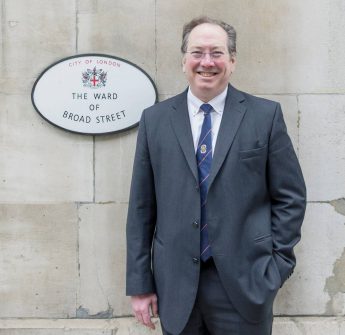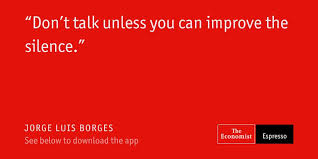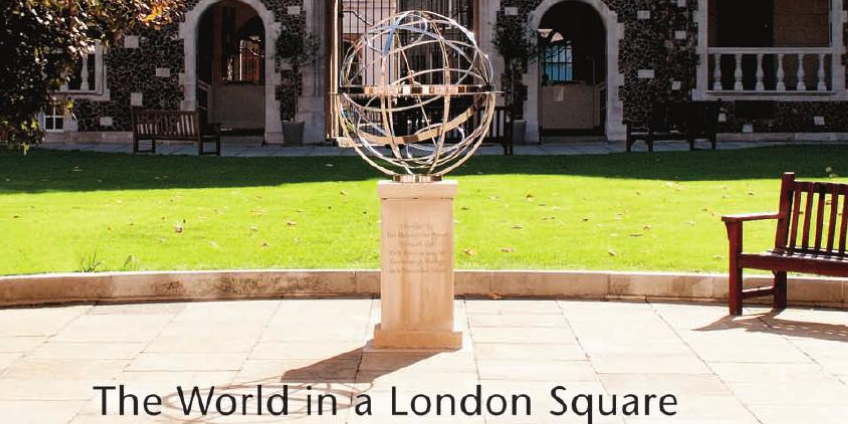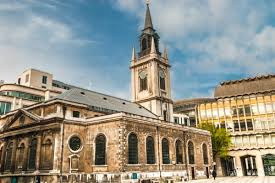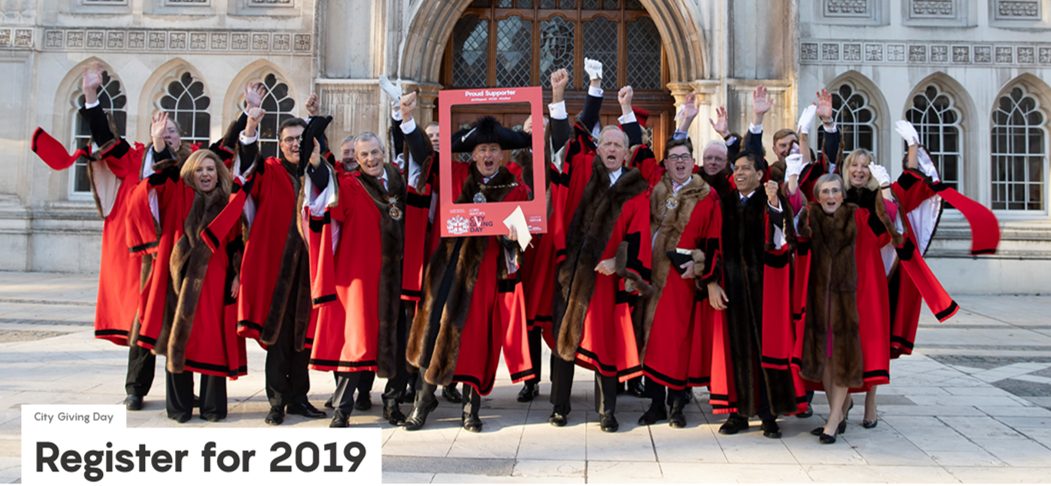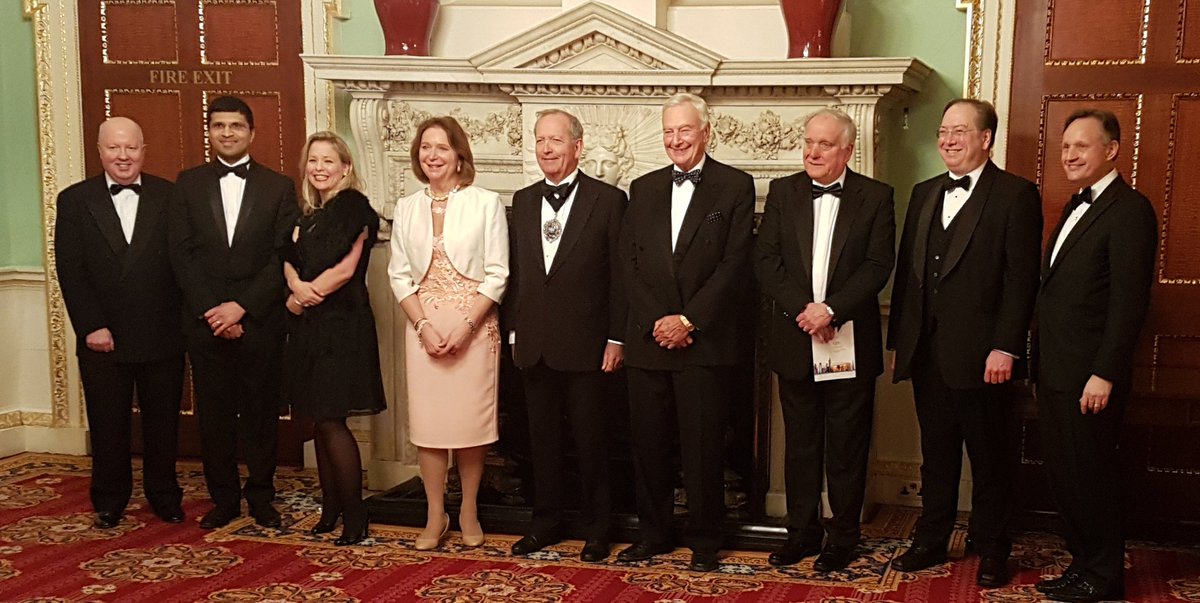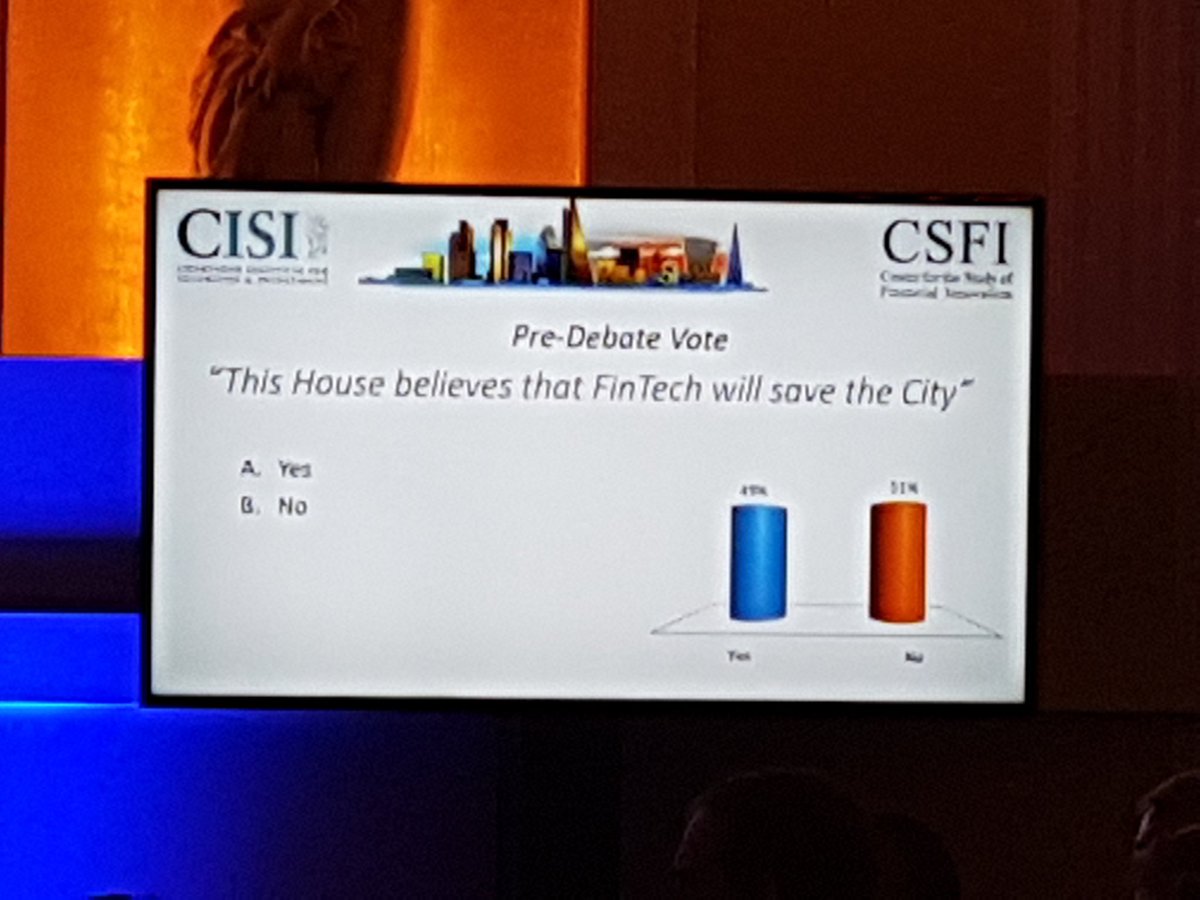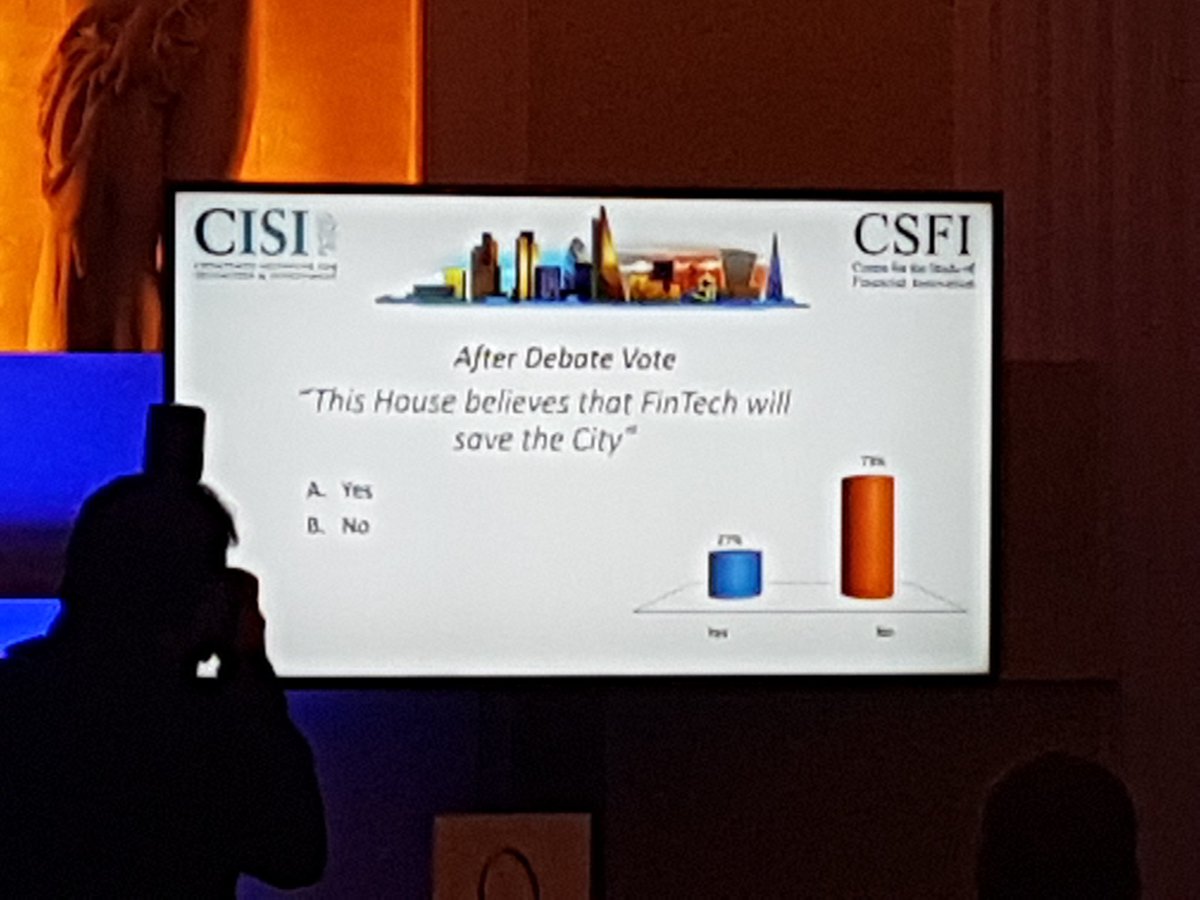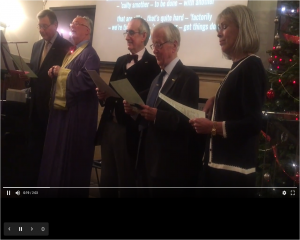I finished my year with a fantastic “Master’s at Home” event at Gresham College. The evening was given some extra zest by the appearance of the Lord Mayor’s Sheriffs, Elizabeth Green and Alderman Vincent Keaveny to receive a cheque for the Lord Mayor’s Appeal.
Continue readingPhilosophical musings
Your essay on reinventing liberalism for the 21st century was a wide-ranging, refreshing reminder of where we’ve been, where we are and how we need to improve (September 15th). As you said, “the core liberal causes of individual freedom, free trade and free markets have been the most powerful engine for creating prosperity in all history.” Significantly, at only two points did your essay mention “capitalism”, and even then as something adjacent to free markets rather than integral to them.
Moving forward, liberals need to be clear that their support for free markets does not equate to support for capitalism. The ownership of the means of production clearly merits discussion, but what liberals should all agree upon is that making choices in free markets is a fundamental part of human freedom.
Professor Michael Mainelli
Master
Worshipful Company of World Traders
London
18 October 2018 – https://www.economist.com/letters/2018/10/20/letters-to-the-editor
Road To Everywhere – Goodenough College
Remarks to: Goodenough College on Founders’ Day, by Alderman Professor Michael Mainelli, 4 October 2018.
“Road To Everywhere”
President, Chairman, Governors, Trustees, Fellow Fellows, Students, Ladies, and Gentlemen. Wilkommen, Benvenuti, Bienvenue,欢迎光临 (huānyíng guānglín), Welcome.
It is a genuine honour to have been asked to deliver this year’s Founders’ Day address. Founders’ Day is an opportunity to cultivate our legacies and sow our futures. We do so in challenging times.
Continue readingDivine Service Prior To The Election Of The Lord Mayor
1 October 2018 at 10:45 – This service is held at St Lawrence Jewry, the official church of the Corporation of London. It precedes the election of the Lord Mayor and is attended by the Masters of the livery companies.
I’ve always been politely amused by the touching adaption of a well-known hymn for the City:
O Praise ye the Lord, fraternities all,
With each patron saint, with Lawrence and Paul,
Praise God in this City, in his name we strive,
And pray for our liveries, long may they survive.
O Masters of guilds, in livery adorned,
Your mysteries keep and strive to be formed
In charity, service, and care for the poor,
Bring God his due honour, and praise Him the more.
Prepare ye to serve, all Aldermen too,
In each of your tasks be faithful and true;
With eye to the Father, and ear on your ward
With all this City, O praise ye the Lord!
This year’s Lesson and Sermon were taken from Luke 16:1-9:
The Unjust Steward
1And he said also unto his disciples, There was a certain rich man, which had a steward; and the same was accused unto him that he had wasted his goods. 2And he called him, and said unto him, How is it that I hear this of thee? give an account of thy stewardship; for thou mayest be no longer steward. 3Then the steward said within himself, What shall I do? for my lord taketh away from me the stewardship: I cannot dig; to beg I am ashamed. 4I am resolved what to do, that, when I am put out of the stewardship, they may receive me into their houses. 5So he called every one of his lord’s debtors unto him, and said unto the first, How much owest thou unto my lord? 6And he said, An hundred measures of oil. And he said unto him, Take thy bill, and sit down quickly, and write fifty. 7Then said he to another, And how much owest thou? And he said, An hundred measures of wheat. And he said unto him, Take thy bill, and write fourscore. 8And the lord commended the unjust steward, because he had done wisely: for the children of this world are in their generation wiser than the children of light. 9And I say unto you, Make to yourselves friends of the mammon of unrighteousness; that, when ye fail, they may receive you into everlasting habitations.
For some of us, it seemed too a propos a lesson on ‘client monies’.
City Giving Day Role Of Honour
Congratulations to all those organisations in the Ward who participated!
City Giving Day Role Of Honour
- Ambac
- Blackrock Investment Management (UK) Limited
- Broad Street Ward Club
- Canaccord Genuity Wealth
- China Construction Bank London
- Deutsche Bank
- Fireclad Ltd
- Gianni, Origoni, Grippo, Cappelli & Partners
- Guild of Freemen
- ING Bank
- IoD City of London
- The Brokerage Citylink
- The Worshipful Company of Carpenters
- The Worshipful Company of Drapers
- Union Bank UK plc
- Z/Yen Group Limited
BROAD STREET WARD – CITY OF LONDON – VOTER UPDATE
To the Ward of Broad Street,
As Alderman for your Ward, I thought I would write and bring you up-to-date with news.
First, you should be receiving our Broad Street Ward Newsletter every six months. If not, or you would like to receive it electronically, please do contact me.
Second, I enclose a few items which might be of interest:
- Our Ward business card;
- A postal ballot form if you would like to ‘vote the easy way’;
- A printout of our Ward website to remind you where to find or post local information, and the Broad Street Ward Club website to remind you that you’re welcome to join – your members, Deputy John Bennett, John Scott CC, Chris Hayward CC, and I, would be delighted to sponsor you.
Third, we have made great progress in Broad Street Ward in three major areas:
- Refurbishment and all-but-pedestrianisation of Austin Friars. This project was completed, on budget, and on time. We have plans for more social and community activities in this area. Please do look out for a Ward Might later in the year, basically an open house in the centre of the Ward one lunchtime. Also look out next year for a street market.
- On-site shredder vans. An outright ban seems a ways off, but we have reduced these vehicles to almost the minimum. If you spot a particular offender, i.e., idling or unattended in a restricted parking area, please do feel free to photograph them and send to me.
- We are proud of the website, now in its fifth year. We also have a twitter account @broadstreetward. We are trying to ‘follow’ all businesses and people in the Ward, so please do ‘follow’ us by return!
Two further opportunities that might interest you:
- City & Ward Overview. Your members are always ready to come to offices in the Ward to explain the City of London, the history, livery companies, wards, philanthropy, and local services. We have a presentation, “What Could The ‘City of London’ Ever Do For Me? Or How Can I Drive Sheep Across London Bridge?” we’d be delighted to give to you and your colleagues if you wish. The presentation also covers how to apply for the Freedom of the City of London, again, something where your members, Deputy John Bennett, John Scott CC, Chris Hayward CC, and I, would be delighted to sponsor voters. Equally, for a large party, we would be happy to host you at the Guildhall for such a presentation, along with a short tour. To request a City & Ward Overview, just email me at michael_mainelli@zyen.com.
- City Giving Day is taking place on 25 September 2018. It’s one day in the year when businesses can unite to celebrate and showcase their charitable and volunteering efforts with employees, clients, suppliers and the public. It is about celebrating what you already do – not asking you for money. To register, just go to thelordmayorsappeal.org/a-fair-city/city-giving-day.
May I take this opportunity to thank you for your support. Your members are always open to ideas for change and improvement. It’s our honour to serve you. We want to continue trying to deliver more by Working for the City, Working for the Ward, Working for You.
Sincerely yours,
Alderman Professor Michael Mainelli, Executive Chairman, Z/Yen Group
“You Never Stop Trading” – Institute Of Export Awards Ceremony
Institute Of Export
Keynote
Alderman Professor Michael Mainelli
23 May 2018, Mansion House
“You Never Stop Trading”
Minister, Aldermen, Fellow Masters, Ladies, and Gentlemen.
The City of London, what better place to graduate in trade and export. The Inspector of Ancient Monuments assures me that London’s archaeological evidence proves over 100,000 years of trading. Bloomberg across the road sits above two millennia of Londinium. We convene for this graduation ceremony over a millennium old stocks market. You are at one end of Cheapside, ‘cheap’ being Anglo-Saxon for ‘market’. One New Change at the other end by St Paul’s is its modern shopping mall. Gresham’s Royal Exchange opposite is over 450 years old.
The word ‘monger’ is old Saxon-German for trader or trafficker. Think, ‘drugmonger’. This trading City is therefore full of Ironmongers, Fishmongers, Lightmongers, Costermongers, Cheesemongers, and even Fearmongers. What am I as Master of the World Traders? Perhaps I should be a WorldMonger or GlobeMonger. Pssst, hey buddy, want to buy a planet?
From Adam Smith onwards, thinkers have increasingly recognised that commerce is about much more than just making money. Commerce is about exchange between people. Commerce is about social interactions where people trade ideas, opinions, or merchandise. Good commerce is a positive sum game. Trade reaps economic benefits from specialisation and comparative advantage, creates prosperity, distributes success and wealth, and collectively enriches all of our societies and communities. Trade is a force for good.
This year’s Lord Mayor, Alderman Charles Bowman, promotes the Business of Trust. His research sets out five principles for trust – five good principles for new graduates. Remember the mnemonic C-I-V-I-C:
• Competence and skills – doing what you do well;
• Integrity – being honest, straightforward, and reliable;
• Value to society – recognising and meeting wider societal needs;
• Interests of others – respecting the interests of customers, employees, and investors;
• Clear communication – being transparent, responsive, and accountable.
Trust underpins all trade and investment, firmly based on the City of London’s motto, “Meum Fidem, Meum Pactum” (“my word is my bond”). Trade should be win-win with other people. As the UK increasingly focuses on trade, remember that no-one should ‘export to’, everyone should ‘trade with’.
So CIVIC, I repeat:
• Competence
• Integrity
• Value to society
• Interests of others
• Clear communication
What I admire about you is that by starting, and finishing, your studies with the Institute of Export you exemplify all five CIVIC principles. You have studied to increase your Competence. Your Integrity in enshrined in your learning. Your Value is inherent in your increased professionalism. You couldn’t trade ethically without taking the interests of others to heart. You have worked hard on communicating your thinking and ideas. You deserve today’s awards.
The Jesuit scholar, Timothy Radcliffe, talks about universities and further education as places where we “learn to talk to strangers.” As you trade with strangers, they become colleagues, and later colleagues become friends.
But education and trade don’t stop here. All of life is learning and trade. In fact, I’ve improved a bit of Shakespeare to get that point across. Indulge me:
All the world’s exchange,
And all the men and women merely traders;
They have their wares and their merchandises,
And one man in his time plies much commerce,
His acts being short changes. [Jacques: As You Like It, Act 2, scene 7, lines 139-143]
I run a technology and finance research firm that is about 90% exports, so this year, the World Traders, young and old, Journeymen your age to ancient Liverymen like me, have focused on “Technology & Trade” as our theme. We are studying how technology transforms trade through debates, workshops, and even research into blockchains, published at the House of Commons last month as “The Economic Impact Of Smart Ledgers On World Trade”. You too will continue to learn through life, or stop living. An old quip goes, “Live as if you were to die tomorrow. Learn as if you were to live forever.” Or as Seneca the Younger stated, “As long as you live, keep learning how to live.”
So, as graduates, should you be optimistic or pessimistic? A number of nationalities walk into a bar and are asked, “are you optimistic or pessimistic?”:
• the Englishman says, “pessimistic, Brexit & Remain”;
• the Scotsman says, “pessimistic, Brexit & Referendum”;
• the Irishman says, “pessimistic, Brexit & Border”;
• the American says, “pessimistic, Trump”;
• the Italian says, “pessimistic, elections”;
• the German says, “pessimistic, Euro”;
• the Australian says, “pessimistic, North Korea”;
BUT the World Trader says, “optimistic, pessimism is for better times.”
And you have such great opportunities. The world is changing as never before, socially, technologically, economically, and politically. It may be a bit crowded now, seven billion people is over double the world I was born into, but even that will change as we are looking to demographic numbers reversing direction about 2050. You will have outstanding chances to use your learning. You will never stop learning and trading.
May I ask you, the graduates, to go forth inspired by the motto our Worshipful Company of World Traders traded with Thomas Jefferson from 1801, “COMMERCE AND HONEST FRIENDSHIP WITH ALL.”
May I wish all of you the success you will earn.
Thank you.
It’s Not All About Winning, Unless You Win
I had a wonderful time at the City Debate last night, Tuesday, 6 March. Here’s a photo of all of us at the start:
CSFI & CISI City Debate:
- Antony Jenkins (10x)
- Nikhil Rathi (London Stock Exchange)
- Michael Mainelli (Z/Yen)
- Ruth Wandhöfer (Citi)
You can spot Ruth on the left, with Angela Knight in the centre who chaired proceedings, and Alderman Alan Yarrow both as Chairman of CISI and as Lord Mayor Locum Tenens. The pre-debate vote was neck-and-neck, 51% “no” (Antony and my side) and 49% “yes” (Ruth and Nikhil’s side).
From the questions it appeared a hostile audience to Antony and me. I had that queasy feeling you don’t like when you’ve volunteered for a competition just for the fun of it, then suddenly realise you could lose in front of all your friends. How can one’s self-esteem ever recover?
Now you can see me in full ‘must win’ mode, or as my friend George Littlejohn would have it – “Michael could be up for playing Churchill come the next biopic.”
Thus it was a genuine surprise, and relief, to find that we moved the audience significantly to our side, 73% to 27%. Whew.
In case my position had anything to do with swaying opinion, I set out the case against, below:
“This House Believes That Fintech Will Save The City” (NOT)
Lord Mayor Locum Tenens, Your Excellencies, Fellow Aldermen, Distinguished Guests, Ladies and Gentlemen.
You heard Antony’s compelling words. My argument balances his. If Fintech doesn’t destroy you, then … Fintech will remain, a small comfortable parasite on the technology and trade centre that is our global City. So what is the City, what is Fintech, what needs saving?
Yesterday, the Inspector of Ancient Monuments assured me that London’s archaeological evidence proves over 100,000 years of trading. I ask you, many of you too also ancient monuments before me, to join together and take a long-term perspective. Bloomberg across the road sits above two millennia of Londinium. We convene over a millennium old stocks market. Gresham’s Royal Exchange opposite is over 450 years old.
With the tragic exception of Edward I’s expulsion of the Jews in 1290, what distinguishes London is that, by comparison, it has treated all comers from outside the walls fairly, so long as they adhere to “meum fidem, meum pactum”. Lombards, Huguenots, Rothschilds, Warburgs … Mainellis.
We are an SME City. 24,000 businesses provide 483,000 jobs in the square mile, with 1,200 more each year. Yes, 250 firms provide 50% of the jobs, but they work with 23,750 deal-making SMEs. Large and small produce 3% of UK GVA from less than 1.5% of the workforce, three quarters of the UK’s services trade surplus, some £68bn.
Urban legends mislead us. The City was a deal centre before and after WWI, but was a feeble financial centre from 1939. The finance legend was kept alive by Italians and Americans, Autostrade in 1963 creating Eurobond markets on neutral territory. When Thatcher lifted exchange controls in 1979 and Big Bang broke cartels, financial services boomed. Most of today’s behemoths were SMEs 30 years ago. Bloomberg dates to just 1981.
You’ve heard of a Baker’s Dozen, 13? I recently learned that a Banker’s Dozen is 11. Just seven banks, not even 11, gets you to over 95% UK market share. Cartels remain. Domestic banks pursue a decades old, yet rational, strategy of hampering account switching. If you want to be a success in retail Fintech, go to a country with over a thousand banks, Germany, or over six thousand banks, America. Make some marketing director’s career rather than annoy a UK bank strategist.
Our retail fintech story is government lies for children, baubles with no Christmas tree:
- M-Pesa in Kenya dates to 2007, eight years before the UK notices Fintech.
- Retail Fintech kids unable to afford desks sit in Level 39 beside the compliance & admin battery hens of Canary Wharf, while Berlin, a quarter our size and not a global financial centre, raises more Fintech finance than we do.
- China has 13 Fintech unicorns to our four. Even that requires forward-dating things like WorldPay, 1995, just to fake our numbers up.
Then we put our regulator in charge of a sandbox, letting government bottlenecks choose our winners. Any country whose regulator is in charge of innovation has deep problems. The wider City is lawyers, accountants, maritime, insurers, not a fintech pimple.
Google Trends awards the term ‘Fintech’ around 100 points. In January 2015 it was an insignificant six points. Our government claims creation of a sector it didn’t even notice four years ago, putting some mobile app lipstick on the antiquated systems of some oligopolistic banks.
I came to the City in 1984 to put computer technology into Messels, then Shearson-Lehman-Amex. We old-timers should celebrate the progress of automating wholesale finance. We’ve been doing real Fintech long before this insulting term was mashed up. It’s as facile as saying your heartbeat keeps you from dying.
London is a science & tech city. From Tudor ‘New Learning’ to Gresham College, Francis Bacon, the Royal Society, Industrial Revolution, Wheatstone telegraph, or DNA (the work was done at Kings, not Cambridge), London has been at least as much about science & tech trade as it has been about finance. Technology-Media-Telecomms is a significantly larger percentage of firms under 100 employees than finance, insurance, or professional services. Our centuries of tech drive regtech, instech, arttech, filmtech, songtech, medtech, edtech, traveltech.
Finance moves with technology too, from cuneiform to papyri to tally sticks to spreadsheets to databases and now databases-plus, smart or distributed ledgers, blockchains. But smart ledgers are ‘wide tech’ for identity, documentation, and agreement exchanges, not just payments. Tech is for all sectors and the City of London is the most intense place on the planet to do tech deals.
So does the City need saving from Brexit, the wider UK, perhaps AI? To paraphrase Streisand, “people who need to trade with people, make London the luckiest City in the world”. As long as we focus on face-to-face, commercial, global deal-making that AI and telecoms can’t replace, deal support will thrive, from financial and professional services to hotels, culture, healthcare, or entertainment.
With or without Brexit, we need quality education and training, health, infrastructure, broadband; airports (plural); an in-visa-ble as possible access to people; a functioning housing market; a simple tax system. If Britain is open for business, try opening a bank account. What always needs saving is the rule of law, innovation, and open deal-making. We are deficient, but not desperate; in danger of having our Emperor’s clothes disrobed, but with time to knit some new garments.
In conclusion, profound changes would be needed to even start to be a standalone Fintech centre. Silicon Valley, in total, is still only half the size of London. Fintech propaganda hides three decades of wholesale finance automation. Our real strength is over 500 years of wider technology and open trade. Sell Trade in Tech not Fintech.
So, do you vote for deep tech or mobile gimmicks, do you vote for City deals or for Canary Wharf turkeys, do you vote for people or machines? Our centuries of success are built on growing SMEs in open, global trade, not some three year old government mashup. Please vote for yourselves, the deal-makers of London, not this facile motion.
References
A Gentleman Is A Livery Master Who Can Make A Speech, But Doesn’t
The Worshipful Company of World Traders’ Members’ Dinner fell on Burns’ Night, so I felt obliged to herd everyone in to dinner with some piping. The Beadle did forewarn the members and guest (Bill Emmott) to enter swiftly or the Master would “play the piper”.
and read on to see in what other way I failed to be a gentleman on the night…
Master’s Remarks
Wardens, My Lords, Distinguished Guest, fellow World Traders. What a delight to welcome you to this Members’ Dinner, our annual chance to get away from it all and kick our feet up informally in a Michelin Star Livery Hall in black tie. My apologies that it being Burn’s night I felt obliged to have at least some Burns’ Night cuisine at the start. I hope we didn’t insult our esteemed chef, and our sincere thanks go to the Innholders for sharing their chef. As Jeeves was wont to say about Anatole, “God’s gift to the gastric juices”, perhaps we should poach him.
They say a gentleman is a man who can play the bagpipes, but doesn’t. I wonder if a gentleman is a Livery Master who can make a speech, but doesn’t. Dream on.
May I start with thanks to Mavis Gold, Charles Lucas-Clements, and Eric Stobart for their remarks, and a special thanks to Norman Rose for some extra-special Scottish music well-played.
A quarter-way into my term, I would like to thank all of you for your immense support. We have had three large set-piece events. Our King’s College Archives tour is hard to surpass, handling DNA Photo 51 and the Wheatstone Telegraph. Our bragging rights to other liveries is certainly that, “as we wore our 3D glasses Dr Brian May of Queen leapt out from the screen to ‘Greet the Worshipful Company of World Traders’”.
Second? The World Traders Stand at the Red Cross Guildhall Fair was the second most successful stand of all 35 livery stalls, who in total raised £170,000. We must thank those who helped out on the stand driving up sales – Amanda Shackell, Corinne Larsen, Fiona Taylor, Gaye Duffy, Janet Martin, Jyoti Shah, Katy Thorpe, Martin White, Mary Hardy, Mavis Gold, Merlene Emersen, Michaela Lorenc-Suhrcke, Simon Spalding, and Vinay Gupta – and praise those who donated items so generously – Mary Hardy, Harprit Siri (Pitu) and Brian Somers. But the highest honour goes to Adèle Thorpe for pulling the entire event together.
Third, our Bank of America Merrill Lynch event exceeded all expectations with 120 members and guests, quite a few of whom are enquiring about membership.
So am I pessimistic or optimistic for the next nine months? A number of people walk into a bar and are asked this question, “optimistic or pessimistic?”:
• the Scotsman says, “pessimistic, I came down to London because distance adds enchantment to bagpipes – and I just heard your Master playing”;
• the Englishman says, “pessimistic, Brexit & Remain”;
• the Irishman says, “pessimistic, Border”;
• the American says, “pessimistic, Trump”;
• the Italian says, “pessimistic, elections”;
• the German says, “pessimistic, Euro”;
• the Australian says, “pessimistic, North Korea”;
BUT the World Trader says, “optimistic, pessimism is for better times.”
Looking ahead, things are moving very optimistically in just the next three months:
• on 15 February we’re all playing with helicopters in Oxfordshire with 28 Squadron at RAF Benson;
• Tacitus Day, 22 February, is now a Day not just a Lecture, with our special guest, Dr Nathan Myhrvold. Nick Mayhew, Zoë Buckingham, Jan Dawson, and the team have six events in one day, a press breakfast, Freedom Ceremony, Lloyd’s Register lunch, King’s College lecture for 400 students and friends, Tacitus lecture itself for almost 900, and two dinners. I calculate we’ll be touching over 1,400 people that day;
• Sue Hughes is organising an event on 17 March honouring the life of our apprentice Ollie Price;
• Lars and Merlene are organising our Commonwealth warm-up debate at Goodenough Collegeon 21 March with 250 people;
• Michael Larsen is organising our Guinness World Record attempt this spring;
• We hope to launch our report into The Economic Impact of Smart Ledgers on World Trade at the House of Commons on 17 April during the Commonwealth Heads of Government Meeting.
And all with the support of Gaye. Don’t tell her, but I do have a few more surprises in store as you will all see, ranging from World Traders being recognised in next month’s City Debate to an article out today featuring our views in International Finance. And our trip to Dublin is fully subscribed with nearly 50 people coming to the Fair City.
We also have a huge range of internal successes which will be shared at Common Hall, much revolving around the intense work of the Communications Committee led by Zoë Buckingham.
Jim Davis once remarked that “Bagpipes are the lost connection between noise and music.” At the moment that might describe me, the lost connection between you and our distinguished Guest.
Our guest tonight is a good friend I’ve known since the late 1980’s, Bill Emmott. He has a most wonderful and impressive career, author of a dozen well-reviewed books on Japan, Italy, Europe, and global issues. We have purchased copies of his latest book, “The Fate Of The West: The Battle To Save The World’s Most Successful Political Idea”, which are on your seats. So we’ll wait patiently here for the next two hours while you read, before we begin questions…
Perhaps most famous for being Editor of The Economist for 13 years, as a taste of his many positions he has been Chairman of the London Library and a Trustee of International Institute for Strategic Studies, and is currently Visiting Professor at Shujitsu University, a Visiting Fellow at the Blavatnik School of Government in Oxford, and a member of Tokyo University’s President’s Council. Bill’s Wake Up Foundation uses film, text, and data for public education and school courses about the decline of Western countries and what can be done to restore liberal democracy. Bill has kindly agreed to a question and answer session after his remarks.
My sincere thanks to all of you for such a wonderful year so far, and now over to Bill.
A Professor’s Lot Is Not A Happy One
And another Christmas party on 14 December? No, our every-other-year Gresham Christmas Soirée. It’s one of my favourite events since I first played my bagpipes there in 2005. And in an ever-stronger-every-other-year tradition we recite Barbara Anderson’s wonderful rewrite of Gilbert & Sullivan:
The Gresham Professor’s Song
We’ve Ge-ometry, Divinity and Music ’Ty and Music
There’s also Commerce, Rhetoric and Law ’Ric and Law
And Astronomy, Psychiatry and Physic ’Try and Physic
The Monday lunch time series, and much more And much more
Our subjects we with difficulty cover ’Culty cover
We formulate some titles that sound fun. That sound fun
Ah, take one consideration with another ― With another
A Professor’s lot is not a happy one.
Ah! When our Gresham Lecture duty’s to be done, to be done,
A Professor’s lot is not a happy one, happy one.
When you’re told to start at six and end at seven End at seven
And you want to fit in ninety Power-points, Power-points
But by five to eight you’ve got to slide eleven Slide eleven
You’re cold and tired and feel your aching joints. Aching joints
Our feelings we with difficulty smother ’Culty smother
When our Gresham Lecture duty’s to be done. To be done
Ah, take one consideration with another ― With another
A Professor’s lot is not a happy one.
Ah! When our Gresham Lecture duty’s to be done, to be done
A Professor’s lot is not a happy one, happy one.
When the au-di-ence ask questions that are silly That are silly
Worse still, they ask us something that’s quite hard, That’s quite hard
We try to answer sat-is-fac-tor-ily. Factorily
If desperate we tell them we’re time-barred. We’re time barred
Our stipends just, with difficulty, cover ’Culty cover
The overheads required to get things done. Get things done
Ah, take one consideration with another With another
A Professor’s lot is not a happy one.
Ah! When our Gresham Lecture duty’s to be done, to be done
A Professor’s lot is not a happy one, happy one.
Perhaps you’d like to see a live rendition? On the left is John Carrington (Chairman) with Professor Robin Wilson leading, and to the right Professor Tim Connell, Professor Frank Cox, and lyricist (?) Barbera Anderson. Fortunately I’m so far left here that I’m out of frame; sadly for you, you can certainly hear me!
